The legal framework for flying a drone in European countries is regulated by EASA (European Aviation Safety Agency). The models are organized into classes, categories, and subcategories. All drones sold from January 1 2024 have to show the relative CE mark specifying the class
In 2024 several rules for flying in the European Union have changed
In this article, I will explain all the steps needed to fly a drone in an EU country
This will apply to users living outside the EU and local users who want to visit another EU country
To keep things simpler, I will only consider models of DJI prosumer line up to the Mavic 3 Pro and only for recreational use
If you prefer to watch this as a video, you will find my YouTube version at the end of this video
Which Countries?

The body responsible for drone regulation within the European Union is EASA (European Aviation Safety Agency)
The same rules apply to every EU country plus
- Switzerland
- Iceland
- Norway
- Lichtenstein

If you live in a country under EASA rules, you should register in the country of your residence and follow the procedures for insurance and permits, if needed
You can then fly your drone in any other EU country
If you live outside the EU, you should register in the first European country you intend to use your drone and follow the required procedures. No further action is needed if you visit other EU countries.
The procedures for registration are not the same in the different countries, some of them are very simple and user-friendly, like Luxembourg, Austria, Ireland, and Netherlands, while others are a bit more cumbersome, like Italy
On the EASA website, a useful page lists all member countries with links to the respective aviation authorities, in most cases with an English version

The United Kingdom (England, Scotland, Wales, and Northern Ireland) is no longer under EASA rules, although the UK Aviation Authority regulations are very close to the European ones
If you want to fly your drone in the UK, follow the link to the UK Civil Aviation Authority
Classes and categories
The different models of drones are organized in a system of categories, subcategories, and classes. It may look a bit complicated, but I will explain it in the easiest possible way
Classes
The classes are organized according to the weight
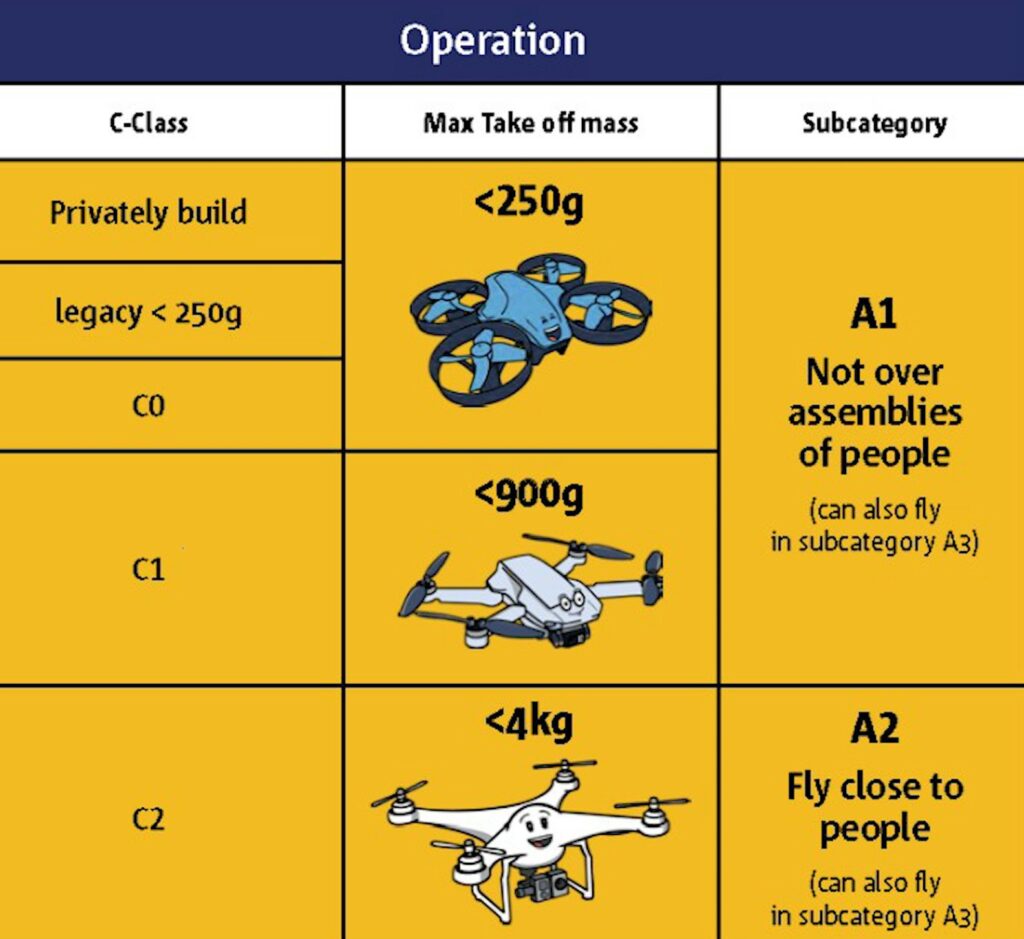
There are six classes, going from C0 to C6, but prosumer recreational drones fall into the first three. These are the ones that will be covered in this analysis
- CO: lightweight models below the threshold of 250 grams. This includes the Mini 2 SE, Mini 3, Mini 3 Pro, Mini 4 Pro
- C1: between 240 and 900 grams, including the Air 3, Mavic 3 and Mavic 3 Classic
- C2: between 900 grams and 4 kg, the only model included here is the Mavic 3 Pro, which is slightly heavier than the other two Mavic models, due to the three lenses
Categories
Categories and subcategories are based on what a drone can and cannot do
There are three categories
- Open
- Specific
- Certified
Open is for leisure and low-risk commercial activities, it is the only one we are concerned with in this analysis. The other two are for higher-risk activities and are beyond the scope of this article
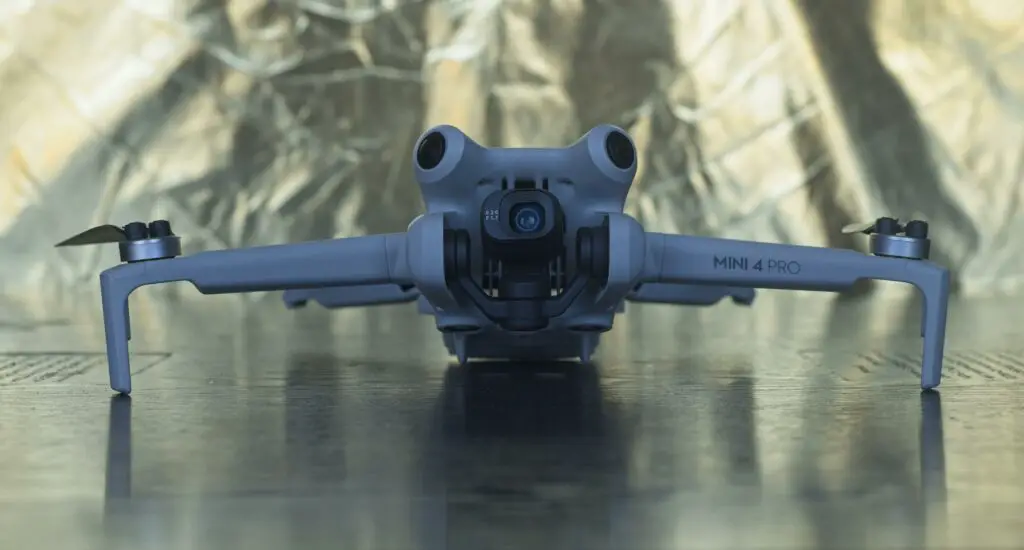
The Open category is divided into three Subcategories:
- A1– It is possible to fly in any non-restricted environment, including urban ones. No minimal distance from buildings is required. Flying over non-informed people is allowed, unless in case of assembly of people, like concerts, the audience of a sports event, weddings, and so on
- A2 – It is possible to fly in urban areas, even close to buildings, but with a minimum distance of 30 meters from uninvolved people
- A3 – A minimum distance of 150 meters must be kept from buildings and uninvolved people
Legacy Models
All drones sold from January 1 2024 have to show the relative CE mark specifying the class

Drones sold before this date without a CE mark will be considered Legacy models

Registration
The first thing to do is to register yourself as an operator. Then you must register the drone if the model has a camera, which is our case
Users based in a European country must register in their country of residence. Users from outside the EU should register in the first country where they intend to use it
Operator
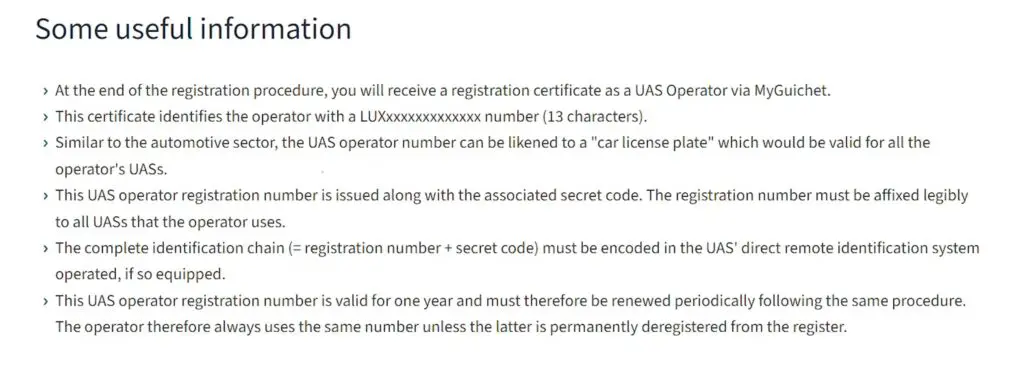
The operator’s registration is generally easy, by simply adding your basic data. The operator number should be attached to the drones to be used
Please refer to the EASA page listing the individual nation’s authorities
Aircraft
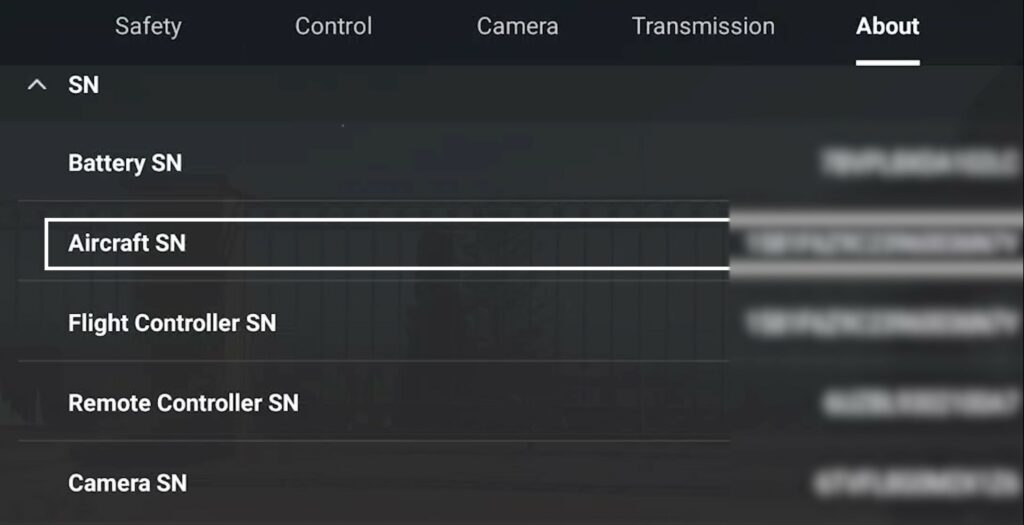
For the registration of the drone, you will have to enter the model and the aircraft’s serial number, which can be found on the About page of the Settings in DJI Fly app
Drones with class identification labels C1 and C2 are equipped with a remote identification system. It is required to upload the operator registration number onto the remote identification system
Insurance
For a model below 20 kg, there is no specific requirement for insurance in EASA drone rules
However, most EASA Member States mandate third-party liability insurance for a lighter drone
So, once again consult the individual national authorities’ websites
If your drone is already insured in your country, It is probably covered when used abroad, but this must be checked on a case-by-case base
Competence
Models below 250 grams do not require any online training or exams
The only requirement is reading the user’s manual
Certificate of Competence A1-A3
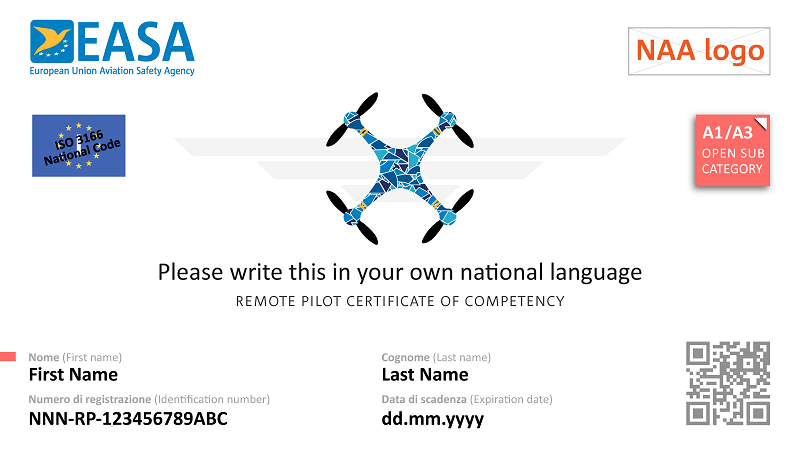
For models of the class C1, like the DJI Air 3, Mavic 3, and Mavic 3 Classic, the certificate of competence A1-A3 is required
The steps needed are not the same in the different EU countries, they are listed in the EASA link to the different national authorities
In most cases, they consist of basic online training with a test with questions largely based on common sense
A few years ago I passed the test with the Austrian authority. The procedure took me about 15 minutes to complete. Ten minutes of online training and another five minutes for replying to the easy questions
A certificate is then issued, I suggest printing it and carrying it in your bag
Remote Pilot Certificate of Competency for A2 Open Subcategory
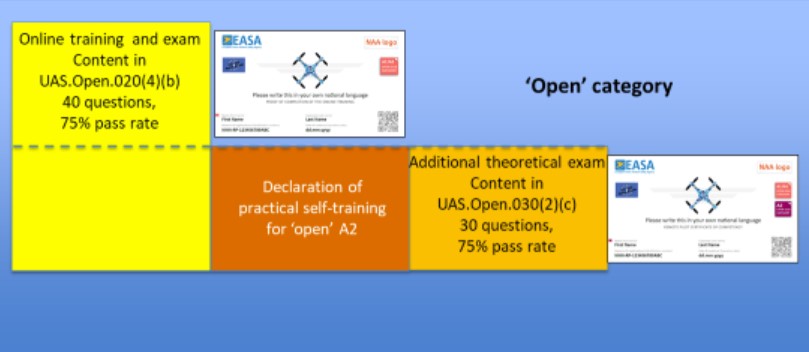
For models of class C2, a more demanding exam is required to obtain the “remote pilot certificate of competency for A2 open subcategory”
Two more steps are involved after obtaining the certificate of competence A1-A3 subcategory:
- Conducting and declaring practical self-training
- Passing an additional theoretical exam

The only DJI prosumer drone involved is the Mavic 3 Pro. If you are visiting from a non-EU country and plan to fly for recreational purposes, you may consider bringing a lighter model
Maps
Before taking off you must check if flying in that specific area is allowed
The usual EASA page contains links to the official maps for most EU countries. Make sure to consult them before each flight

Restricted areas are generally in red. Flying is not allowed, although in some cases it is possible to apply for authorization
Warning areas are in Orange or yellow, here the maximum flight height can be limited
It is also possible to consult DJI Fly Safe maps which work similarly. Several European countries have integrated their official maps into DJI Geo System so that they are constantly kept up-to-date
Other Regulations
Some regulations to be aware of when flying in a European country:
- The maximum flight height is 120 meters for all classes and subcategories
- The aircraft must always be under Visual Line of Sight
- When flying at night the drone must have flashing green lights for recognition and a constant light to keep track of its position
- When flying indoors the only rule is to avoid flying over uninvolved people
- FPV flight with goggles is only allowed with another person close by acting as a spotter to detect obstacles
